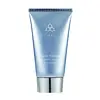What's inside
What's inside
 Key Ingredients
Key Ingredients

 Benefits
Benefits

 Concerns
Concerns

 Ingredients Side-by-side
Ingredients Side-by-side

Water
Skin ConditioningButylene Glycol
HumectantGlycerin
HumectantDimethicone/Vinyl Dimethicone Crosspolymer
Skin ConditioningDimethicone
EmollientNylon-12
Carbomer
Emulsion Stabilising1,2-Hexanediol
Skin ConditioningCaprylyl Glycol
EmollientDimethicone Crosspolymer
Emulsion StabilisingHydroxyacetophenone
AntioxidantSodium Polyacrylate Starch
AbsorbentCaprylic/Capric Triglyceride
MaskingMethyl Trimethicone
Skin ConditioningSodium Hydroxide
BufferingHydrogenated Lecithin
EmulsifyingMaltodextrin
AbsorbentSodium Hyaluronate
HumectantPistacia Lentiscus Gum
MaskingPhenethyl Alcohol
MaskingSodium Carbonate
BufferingEthylhexylglycerin
Skin ConditioningHamamelis Virginiana Leaf Extract
Skin ConditioningPolyphosphorylcholine Glycol Acrylate
Water, Butylene Glycol, Glycerin, Dimethicone/Vinyl Dimethicone Crosspolymer, Dimethicone, Nylon-12, Carbomer, 1,2-Hexanediol, Caprylyl Glycol, Dimethicone Crosspolymer, Hydroxyacetophenone, Sodium Polyacrylate Starch, Caprylic/Capric Triglyceride, Methyl Trimethicone, Sodium Hydroxide, Hydrogenated Lecithin, Maltodextrin, Sodium Hyaluronate, Pistacia Lentiscus Gum, Phenethyl Alcohol, Sodium Carbonate, Ethylhexylglycerin, Hamamelis Virginiana Leaf Extract, Polyphosphorylcholine Glycol Acrylate
Water
Skin ConditioningDicaprylyl Carbonate
EmollientGlycerin
HumectantNiacinamide
SmoothingPropanediol
SolventBetaine
HumectantPolyglyceryl-4 Isostearate
EmulsifyingCoco-Caprylate/Caprate
EmollientMagnesium Sulfate
Glycosphingolipids
EmollientGlycolipids
Skin ConditioningSodium Benzoate
MaskingDisteardimonium Hectorite
StabilisingOleic Acid
EmollientPotassium Sorbate
PreservativeCitric Acid
BufferingPolyglycerin-3
Humectant
 Reviews
Reviews

Ingredients Explained
These ingredients are found in both products.
Ingredients higher up in an ingredient list are typically present in a larger amount.
Glycerin is already naturally found in your skin. It helps moisturize and protect your skin.
A study from 2016 found glycerin to be more effective as a humectant than AHAs and hyaluronic acid.
As a humectant, it helps the skin stay hydrated by pulling moisture to your skin. The low molecular weight of glycerin allows it to pull moisture into the deeper layers of your skin.
Hydrated skin improves your skin barrier; Your skin barrier helps protect against irritants and bacteria.
Glycerin has also been found to have antimicrobial and antiviral properties. Due to these properties, glycerin is often used in wound and burn treatments.
In cosmetics, glycerin is usually derived from plants such as soybean or palm. However, it can also be sourced from animals, such as tallow or animal fat.
This ingredient is organic, colorless, odorless, and non-toxic.
Glycerin is the name for this ingredient in American English. British English uses Glycerol/Glycerine.
Learn more about GlycerinWater. It's the most common cosmetic ingredient of all. You'll usually see it at the top of ingredient lists, meaning that it makes up the largest part of the product.
So why is it so popular? Water most often acts as a solvent - this means that it helps dissolve other ingredients into the formulation.
You'll also recognize water as that liquid we all need to stay alive. If you see this, drink a glass of water. Stay hydrated!
Learn more about Water